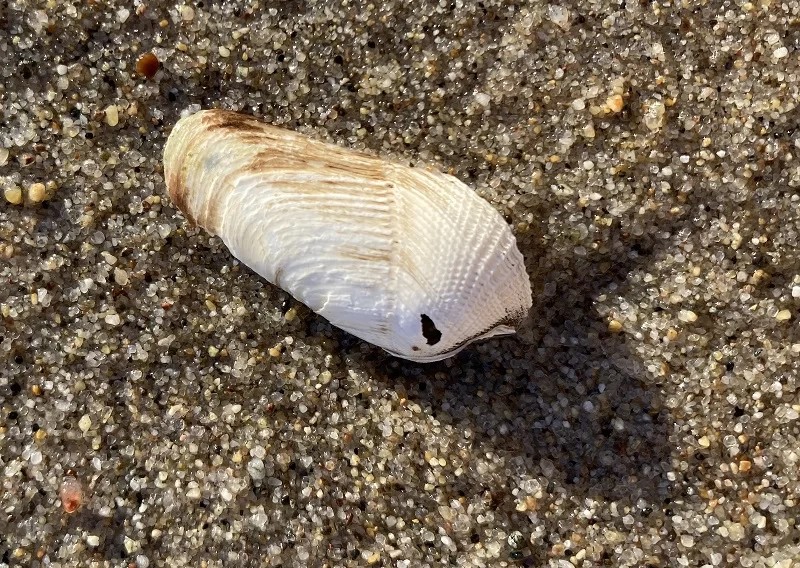
Sea stones with holes in them have long been regarded as magical talismans, carried for protection, or safe passage. There’s a grain of truth in that belief, because these “holy stones”, also known as “witch stones” and “hag stones,’ were created to be a refuge for a highly unusual creature.
The piddock is a clam-like member of the mollusk family Pholadidae. Piddocks are also known as boring clams—used in this case as a verb not an adjective—and as angelwings, which describes the shape of the shell.
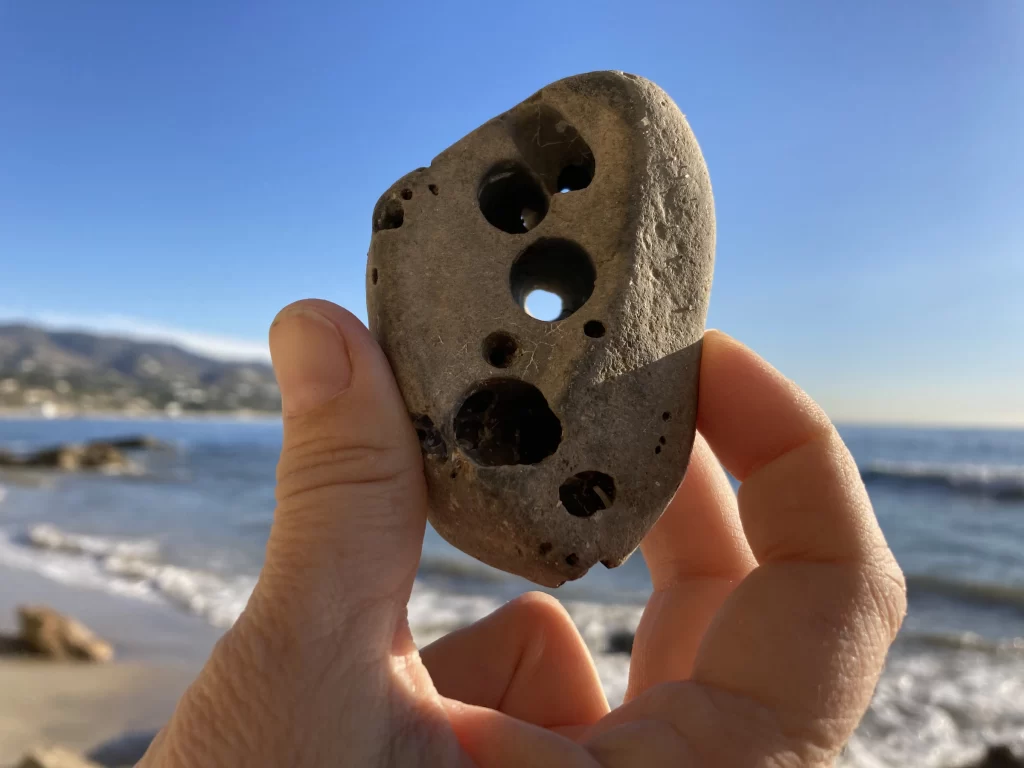
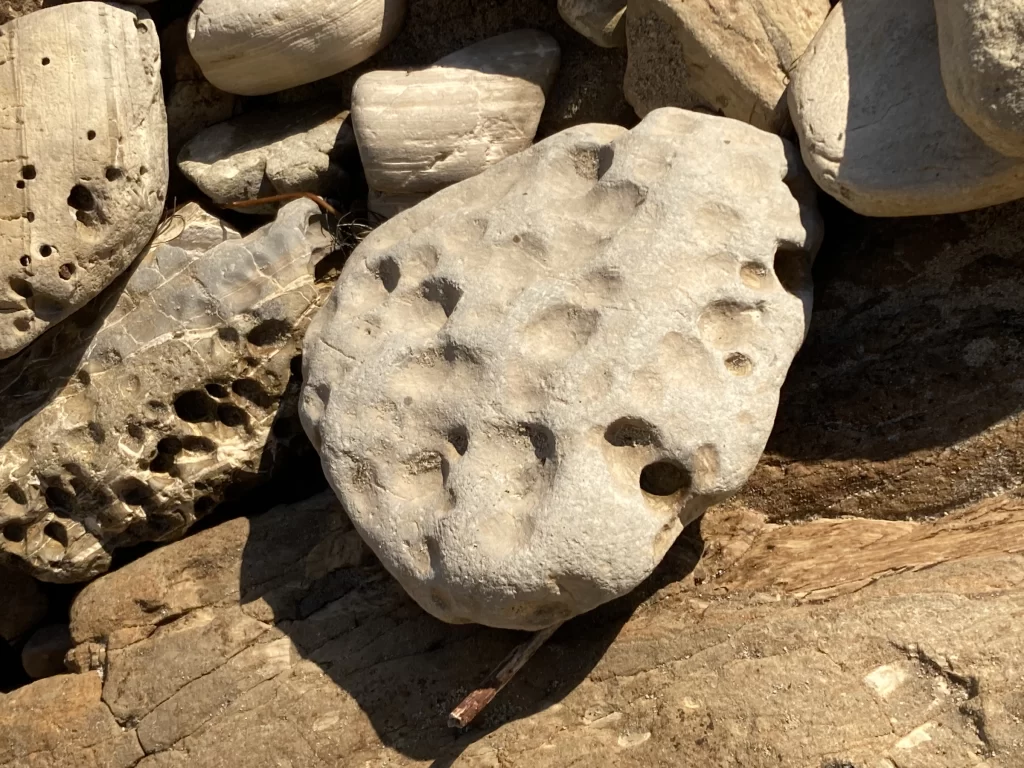
The piddock uses the sharp, rough-textured end of its wing-shaped shell to drill perfectly round holes through stone. This small mollusk’s industry is in evidence in almost every tide pool at low tide. Piddock rocks often have so many holes in them that they resemble Swiss cheese or crater-pocked meteors.
Piddocks begin life as free-swimming larvae, part of the vast and diverse group of organisms known as zooplankton. Piddock larvae have an unusual talent for detecting the chemical signature of adult piddocks, which enables them to track down the kind of stone they need for the next phase of their life.
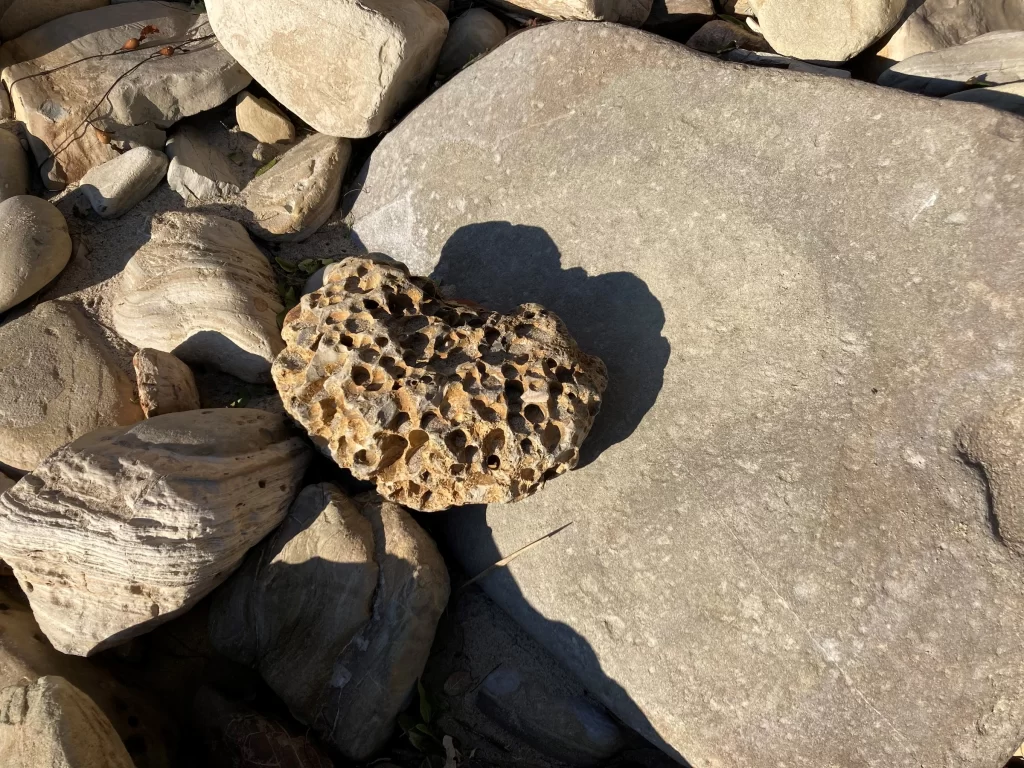
Once the piddock grows a shell, it begins to drill a burrow. Piddocks seek out soft siltstone shale, and chert. Depending on how hard the stone is, a piddock clam can grind between one and four millimeters a month. They reach maturity in around three years and can live for as long as 20 years growing to be as much as six inches long. Each clam lines its burrow with a protective layer of calcium carbonate. It serves as both a protective layer and a prison, sealing the piddock into its home.
They may be small and slow, but piddocks make a surprisingly big contribution to coastal erosion, weakening the stone they colonize, causing it to break apart. Old piddock rocks are a critically important part of the intertidal ecosystem on the California coast, providing shelter for a host of other organisms.
The most famous species of piddock is Pholas Dactylus, which was a popular food item in Europe and the Mediterranean until over-harvesting and environmental pressures caused populations to plummet. This is the shellfish described by the Roman writer Pliny for its remarkable bioluminescence. “[They] shine in darkness with a bright light when other light is removed,” he wrote in the third volume of his Natural History, describing how the shellfish made the mouths of those who ate it glow.
Researchers attempting to recreate the phenomenon found that the piddocks had a strong chemical taste.
The local species, Parapholas californica—also called the scale-sided piddock—is a California endemic, found from Northern California to Baja. P. californica doesn’t seem to share the glow-in-the-dark trait of its European relations, and it also appears to have been spared a place on the menu for humans, unlike many of its relatives.
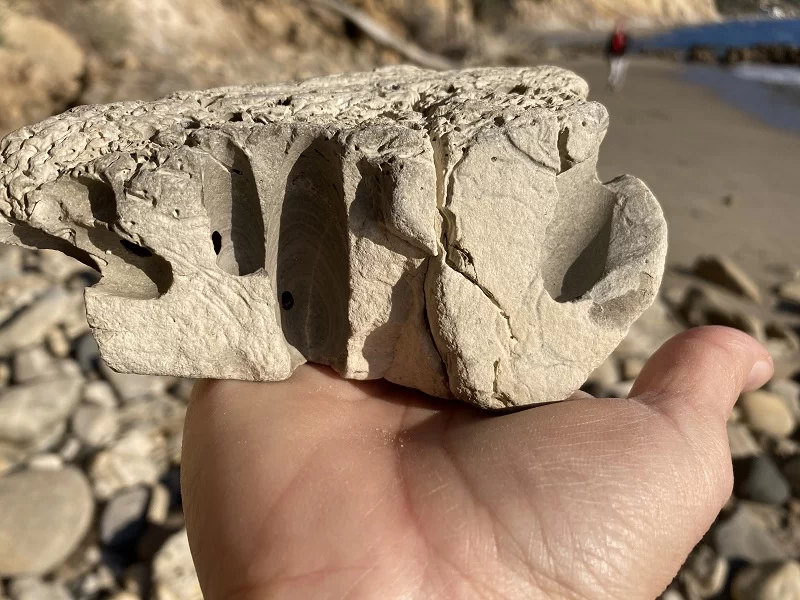
The hole drilled by a piddock clam provides sanctuary for the clam throughout its life, but in exchange for security, the clam loses the ability to move, becoming a permanent resident of its burrow.
It’s easy to spot empty piddock stones, but when the clam is in residence only the piddock’s two siphons—a larger one that is fringed with filters for taking in food, a smaller one for excreting waste—are visible. P. californica lives in the lowest low tide zone, where it is at the least risk of being exposed to air during low tides. Living piddocks are frequently seen by divers, but not by tide pool enthusiasts.
Long after the piddock is gone, its hole may provide a refuge and home for other marine organisms, including anemones and a variety of worms. Not all piddock holes are recent. According to an article by Cabrillo Aquarium educator Carl Carranza, rocks with ancient piddock holes erode out of the cliffs over time, ending up back in the intertidal zone. These fossil traces of ancient clams can be as much as 10,000 years old. There are other marine organisms that drill holes in rock—Chaceia ovoidea is another member of the Pholadidae family that makes holes in silt and shale, and there are a variety of worms with remarkable boring abilities—but usually, on our coast, that rock with the neat round hole that looks like something created by a modernist sculptor is a work of the piddock clam, created millimeter at a time in the dark and silence of stone. This is a monument to a small mollusk, an enduring artifact that may last for millenia, far longer than most human endeavors endure. There is nothing boring about the boring clam.
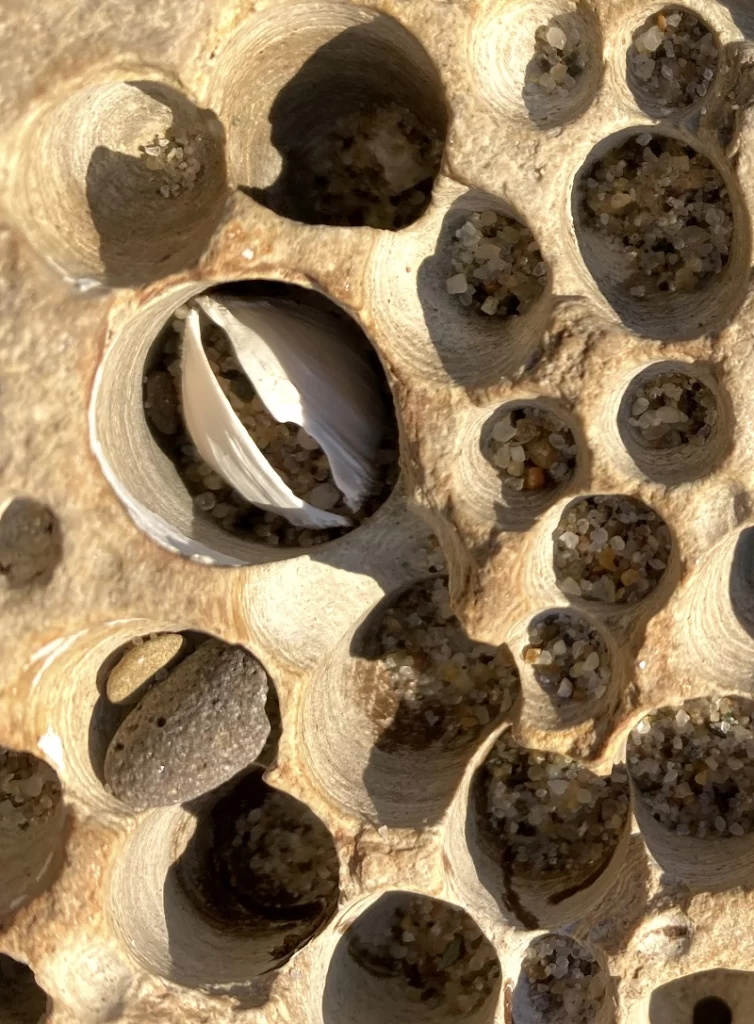













Extraordinary article, beautifully written and informative. Thank you so much.
Found on Cambria, Ca. NextDoor link in response to a member inquiry. Our guru of all things natural, Elizabeth Betanhausen supplied the link. Happy New Year!